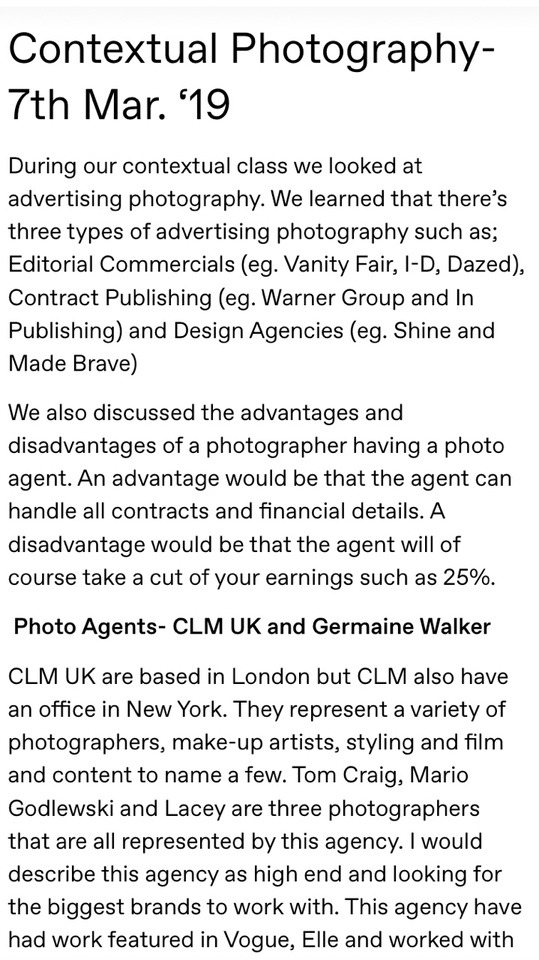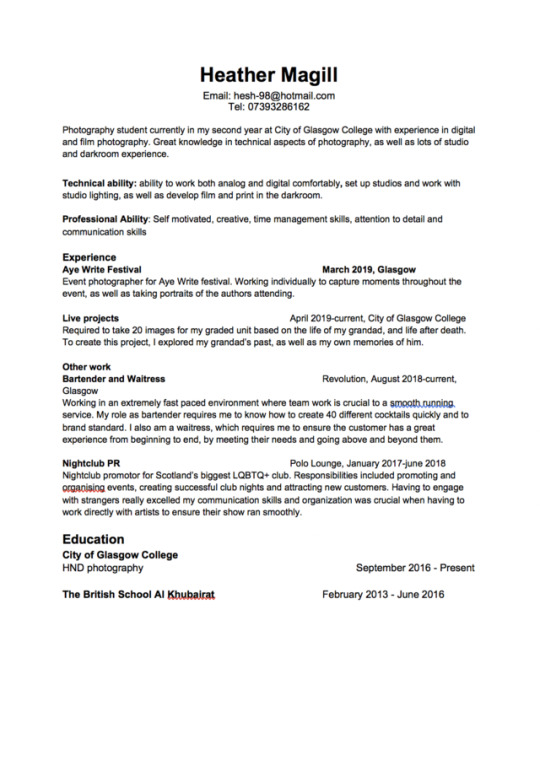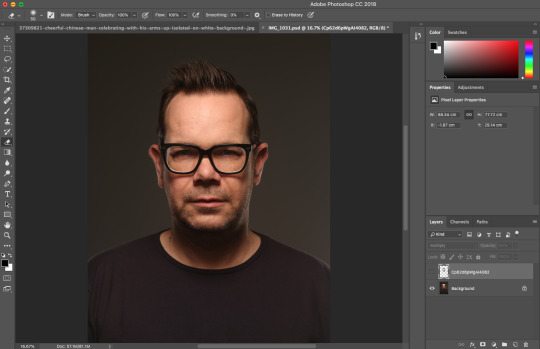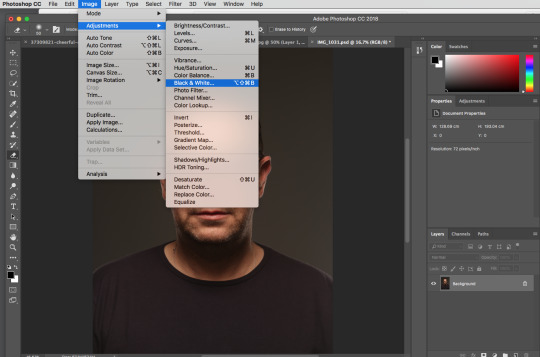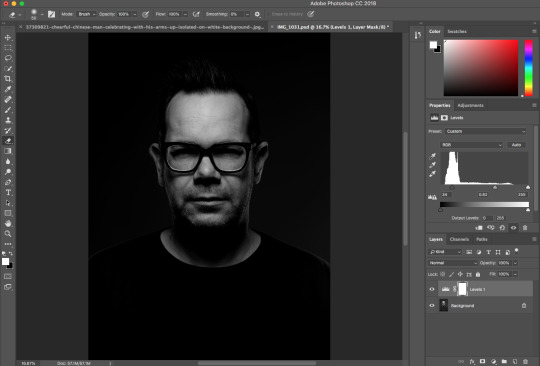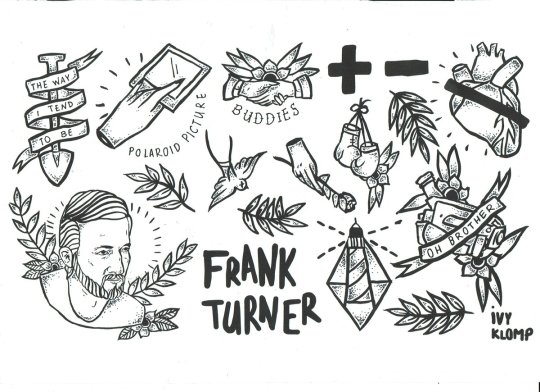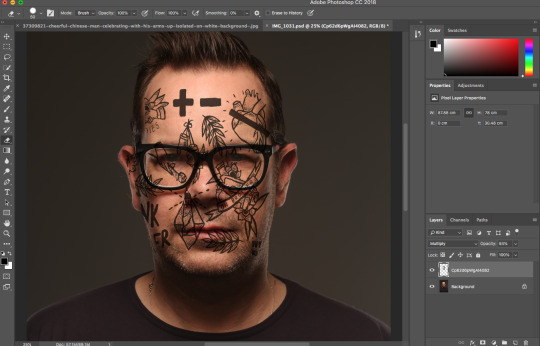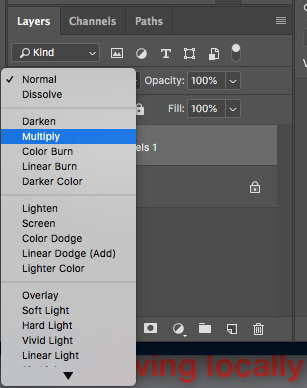Text
Exhibition Review
Describe the roles involved in setting up an exhibition.
We split into 4 different teams; installation, promotion, distal and mediate. All 4 teams played a role on the success of the exhibition. The promotion team had the job of prompting the exhibition through the use pf things such a posters and social media. The Mediators had the job of simply looking after the exhibition and making sure the work was safe and correct. The installation group put up the exhibition, and the dental team done the opposite.
Describe your own involvement - what did you do to make it a success?
I was part of the promotion team, which meant that we are the team who deals with all things promotion. We made the poster and also promoted it on our own social medias.
Describe the effectiveness of the venue.
The Theatre Royal was great venue, which was very spacious and had a lot of natural light.
How did you go about selecting the work you are showing?
We picked our favourite images and seeked advice from our lecturers on which would be the most favourable images to use. It was then up to the installation team to choose which images worked well together based on tone, subject, colour etc.
Comment on the effectiveness of the framing and layout.
All images were printed on A3 paper, with a black rimmed a3 frame. It complimented the images well, however as the images had glass over them I found it made darker images harder to make out - this was a problem I had my my work.
What does the exhibition say about the work produced at COGC?
It shows the talent on show at COGC, as well as the variety of photographers.
Which work attracts you and why?
I really liked more ambiguous work, stuff that really requires you to figure it out.
How will others know about the exhibition?
the promotion team advertised the build up to the opening night through using social media.
0 notes
Text

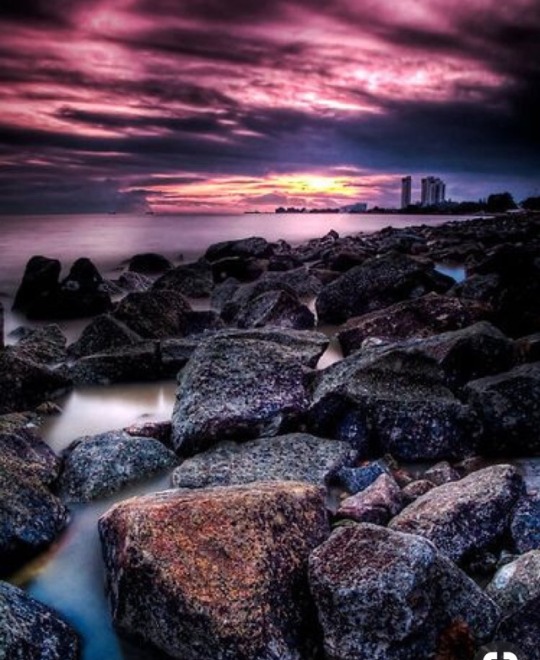
Good vs bad examples of HDR
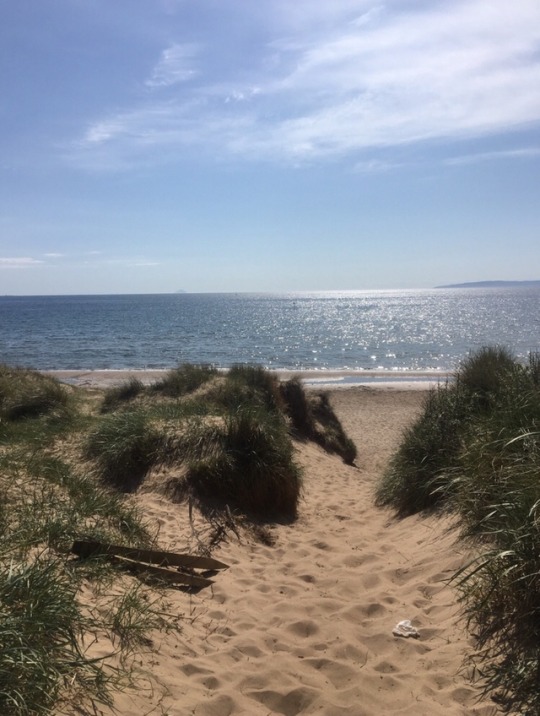


HDR (High Dynamic Range) is a post-processing photographic technique that adds more contrast in your images. The dynamic range is the ratio of light to dark in an image. To create a HDR image, shoot three images set at different exposures (e.g. overexposed, underexposed, perfectly exposed), then import the images onto your chosen software and combine the images together to create HDR.
My own example of HDR. There is very little detail in the shadows of the grass. The final photo shows 9 bracket HDR at one stop per bracket, which was merged in lightroom.
0 notes
Photo
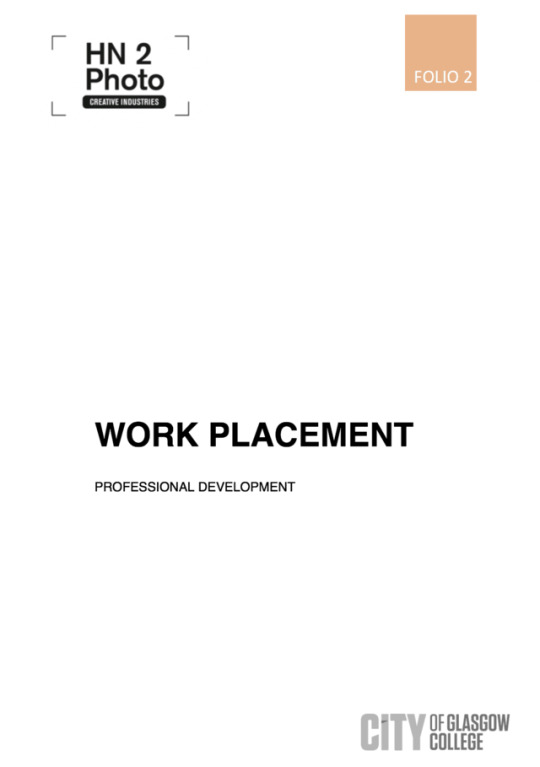
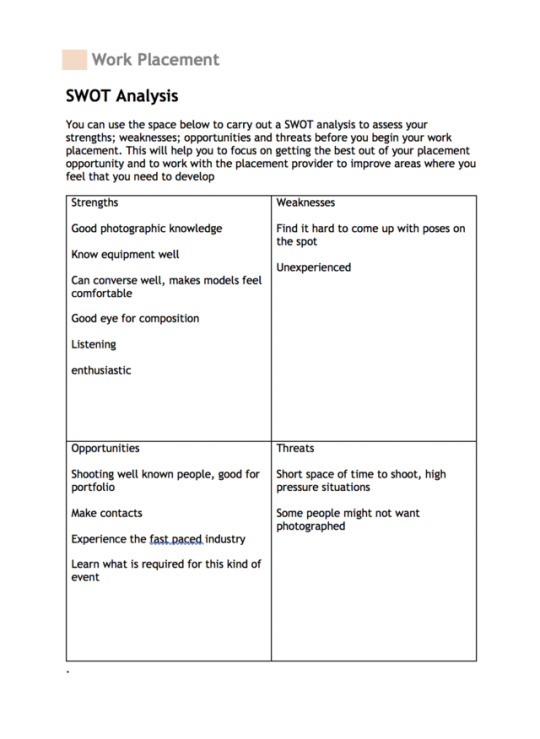
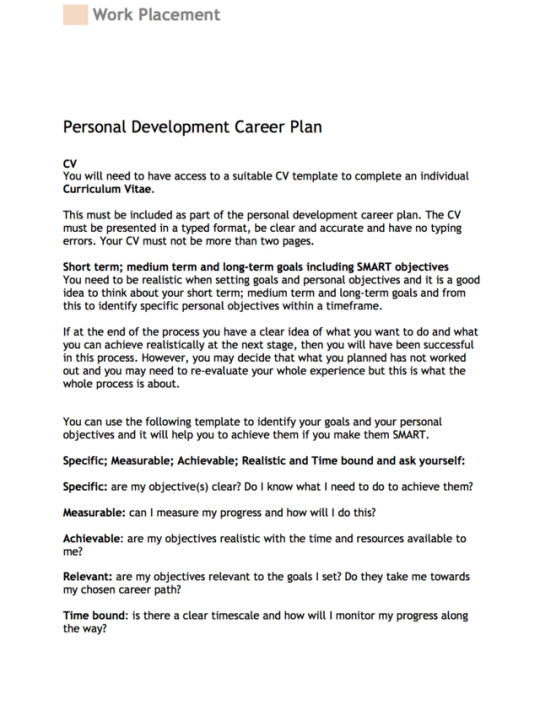



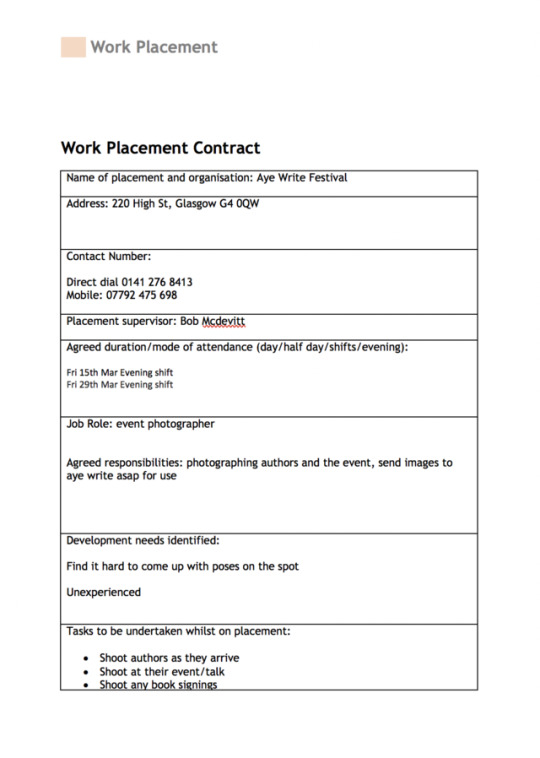


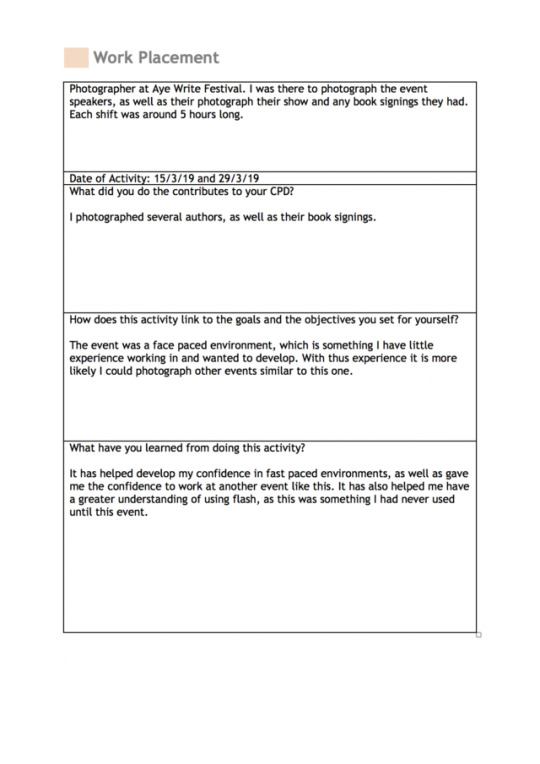
  Work Placement Documents Aye Write Festival
0 notes
Photo


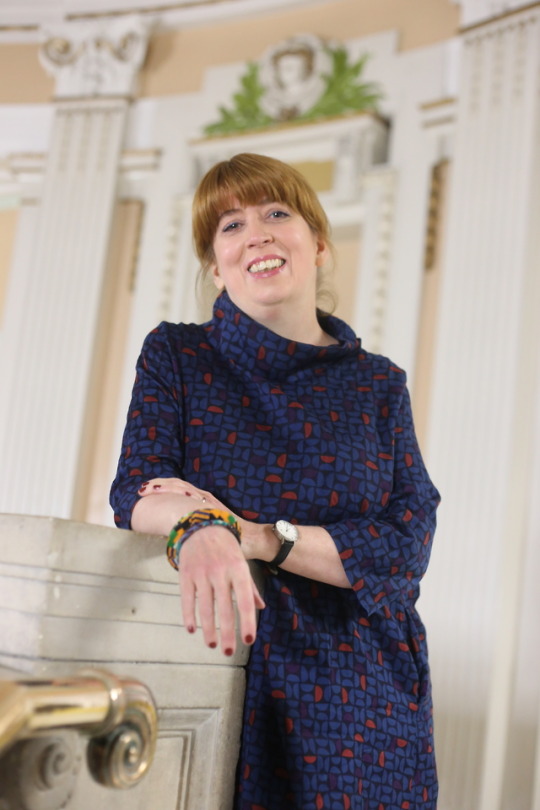
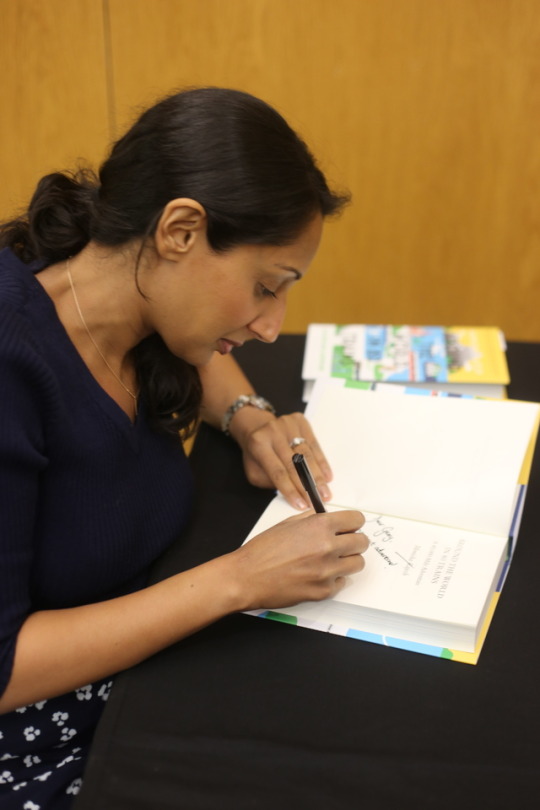
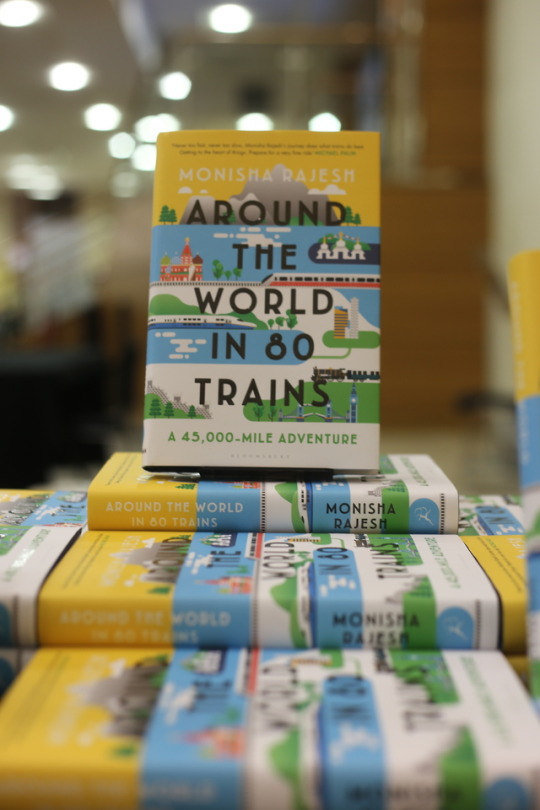
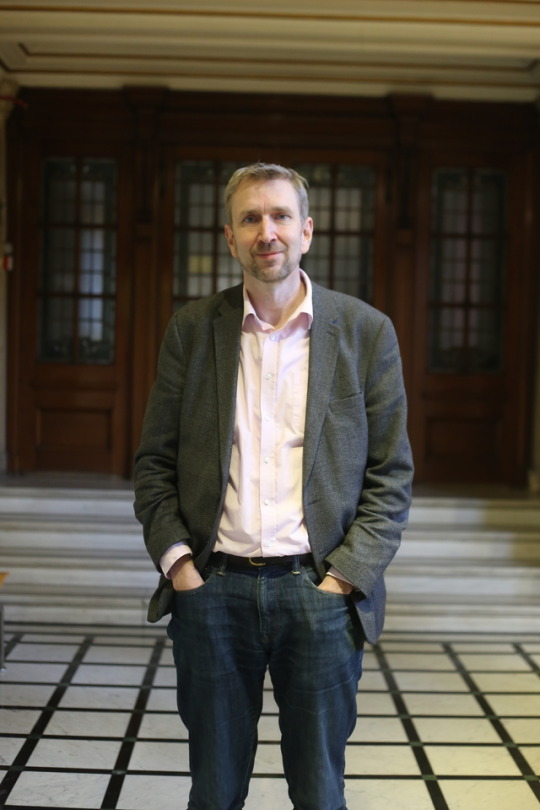

Aye Write Festival
Here are some of my favourite shots from Aye Write festival.
0 notes
Photo

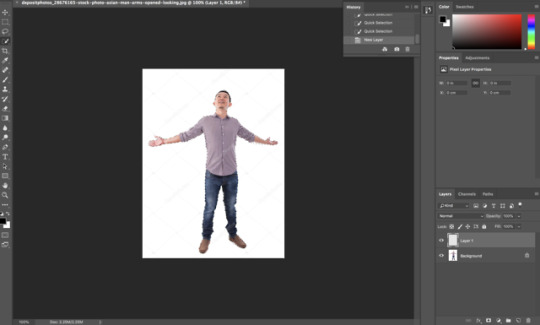
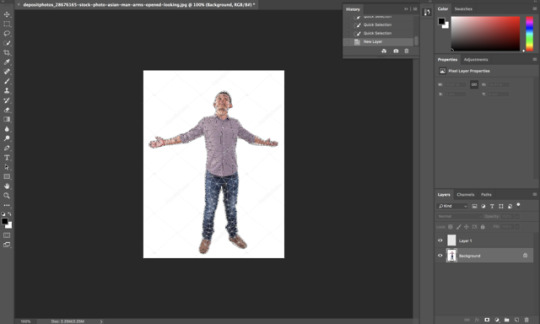
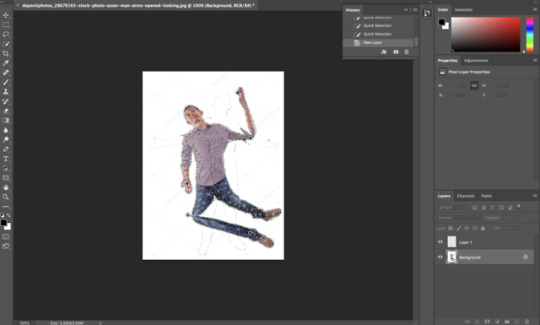
Puppet Warp
duplicate the layer and make a selection of the subject
select puppet warp
after the edit you could add a coloured background with filling a rectangle if appropriate to the image
0 notes
Text
Paper Movies
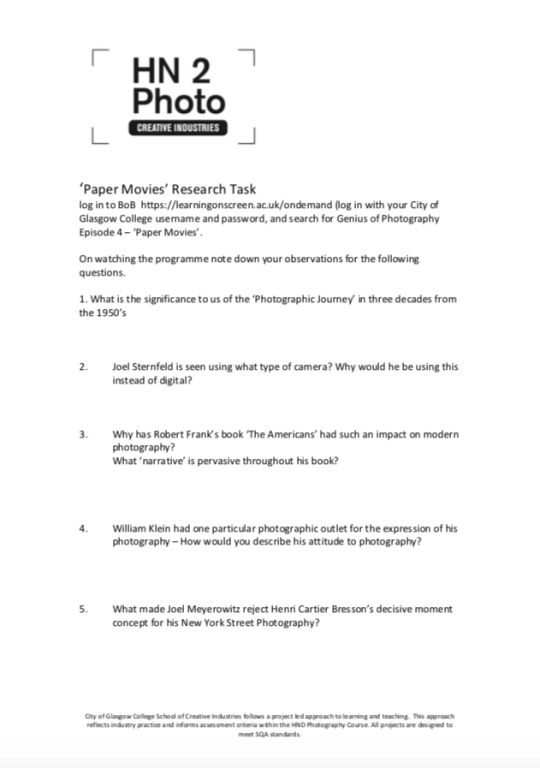
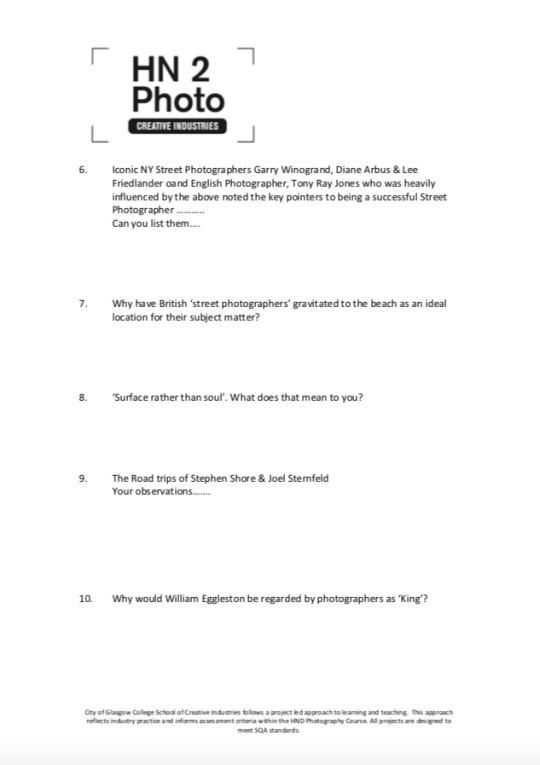
1. It was described as the “golden age” - marked the moment when colour photography was considered a serious thing. Photographers also became to look for things others are unable to see i.e. exploring the desert.
2. Joel Sternfeld shot using large format 8x10 film camera on a tripod. Using this camera meant he could achieve a much better quality. Furthermore I feel as though using large format would add to the quality of the image, as well as the authenticity of it.
3. “The Americans” by Robert Frank had such an impact on modern photography as he brought an outsider’s perspective to the states he visited. He focused a lot on Americans evolving culture.
4. William Klein’s attitude to photography is described as “anarchic”, which is something I totally agree with, his work was ironic and unconventional, which ultimately captured unusual and unique moments.
5. Joel Meyerowitz didn't agree with Henri Cartier-Bresson’s “decisive moment” concept because Paris and New York are two completely different places. Bresson capture New York in an almost polite way, where as meyerowitz caught its real life energy
6. Tony Ray Jones’s key points for a successful street photographer:
Be more aggressive
Get more involved
Be patient
Take simpler pictures
Be more aware of composition
Get in closer
Shoot 1/250s or above to avoid camera shake
Don't take boring pictures
7. British street photographers have gravitated towards to the beach as an ideal location for their subject matter because so much happen on a beach in one day. The beach is like a stage, which ultimately makes for a great photograph.
8. “surface rather than soul” means only to look at the exterior of a subject, rather than getting to the deeper meaning of it.
9. Black and white photographs were seen as being “natural”, so when these projects were shot in colour, it was shocking to some people as it was something that you just did not do back then. Colour was unsophisticated and seen as a joke.
Each project reveals everyday scenes in America during the 1960s/70s.
The colours in each project from Shore and Sternfeld are incredibly beautiful, and you can clearly see the extraordinary expressions during this period.
10. William Eggleston was able to shoot colour in a very different way from others, hence why he was regarded as “King” by many photographers. He essentially increased recognition for colour photography as a serious artistic medium.
0 notes
Photo
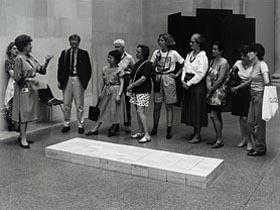
In contextual class we watched a documentary on Carl Andre’s brick, which was bought by Tate in 1972. The bricks created a national controversy over what is considered “art”
“Each of Andre’s Equivalent series consists of a rectangular arrangement of 120 firebricks. Although the shape of each sculpture is different, they all have the same height, mass and volume, and are therefore ‘equivalent’ to each other. Andre’s sculptures are often assembled using common industrial materials, which he arranges into a simple geometric pattern. His sculptures are always placed on the floor rather than on plinths. Not simply objects to look at, they become part of the environment, altering the viewer’s relationship to the surrounding space.” - Gallery label, October 2016.
I personally don't like the bricks, I can appreciate them but they don't really excite me.
0 notes
Photo

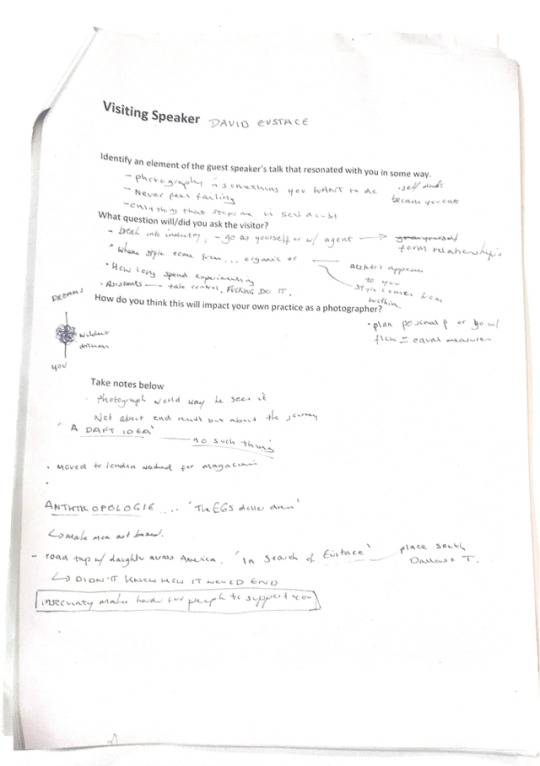
PhotoFest Talk
DAVID EUSTACE 10\01\19
In 1982 joined army then Bar L prison service
Journey is more important than the end result
He returned to education to study photography
Studying photography was stated as a daft idea
Started working for magazines in London, advertising campaigns
Moved to New York and started working as a fashion photographer
He wrote a book “I write to tell you about. a baby boy born yesterday”
“Anthropologe” the sixty five dolour dress
Bright Star (movie)
Make something from heart
You will get a thing if you do it
The only thing holds us back is ourself
Photograph things the way you see it and that is your style
Go with the flow when planning, don’t over plan you might loose passion about the project.
Be passionate and respectful towards your ability
Get inspiration from daily life life
0 notes
Photo
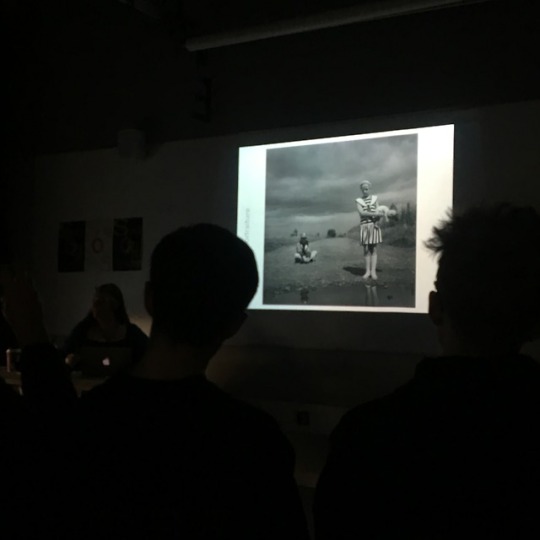

PhotoFest talk 8.1.19
Margaret Mitchell
Childhood, youth, place , belongings
portraits and documentary photographer
30 years of experience
Sensitive documentary
Works with children and her own family
Project on epilepsy
Uses 35\120 film
Has an eye for little details
Black & white and colour photography
She shoots commercial work digitally
Commissions, Editorials, Residencies, Exhibitions, Funded projects, Personal projects, Participatory.
She makes photo books
Ongoing theme is childhood
Updating projects
Personal and social geography
0 notes
Photo
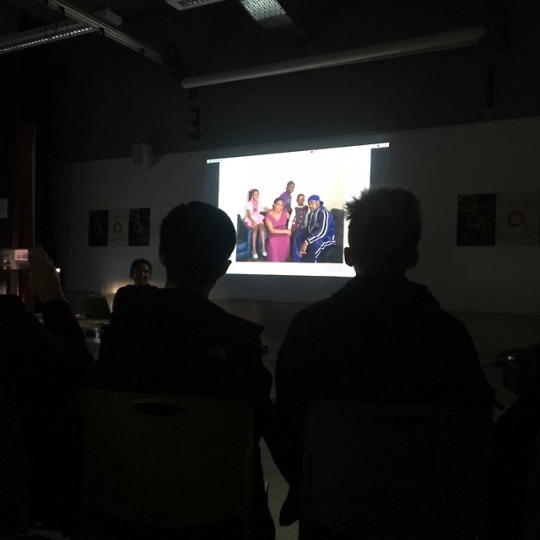
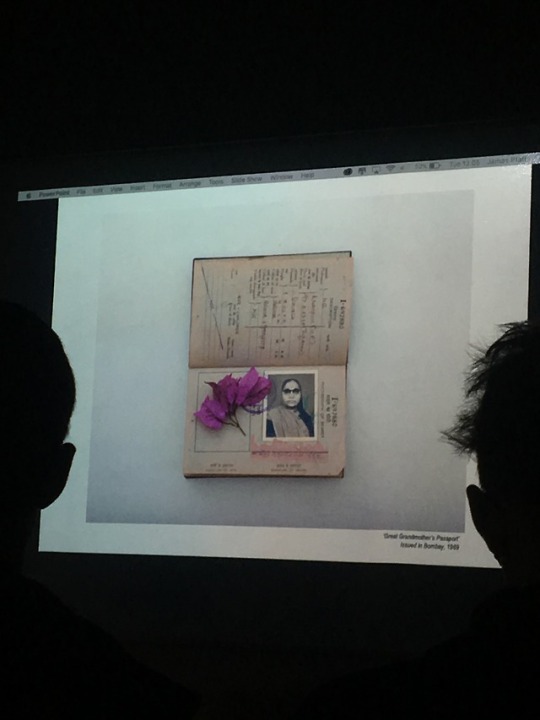
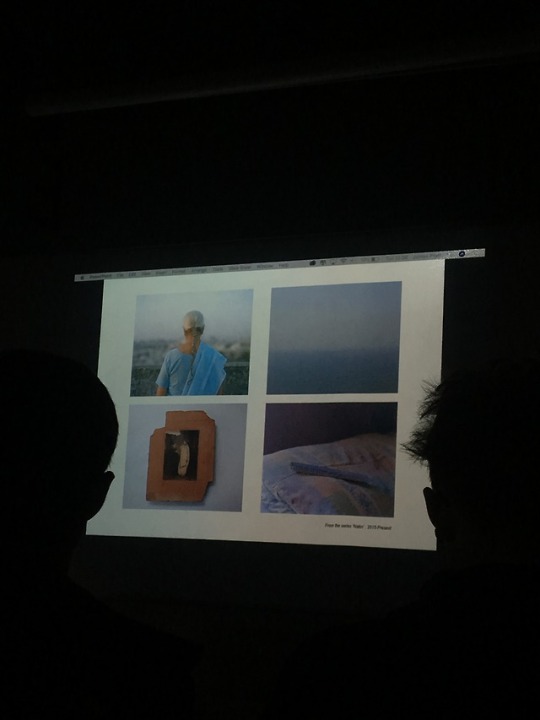

PhotoFest talk 8.1.19
ARPITA SHAH
Documentary background
Graduated 2006
Home, migrant, identity, 70′s paintings
Women travelling from past to present
Shoots film with 5x4 camera, medium\large format camera
Being in different cultures
Uses paintings for inspirations
2012 work shown at street level
Travelling gallery
Alber drive 2013
Artist residency for a month
0 notes
Photo
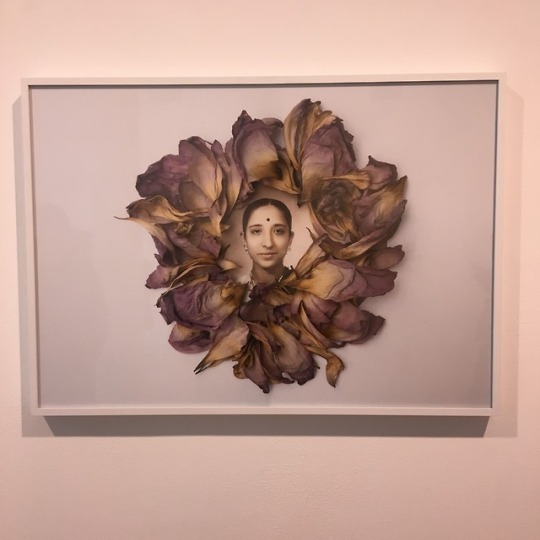
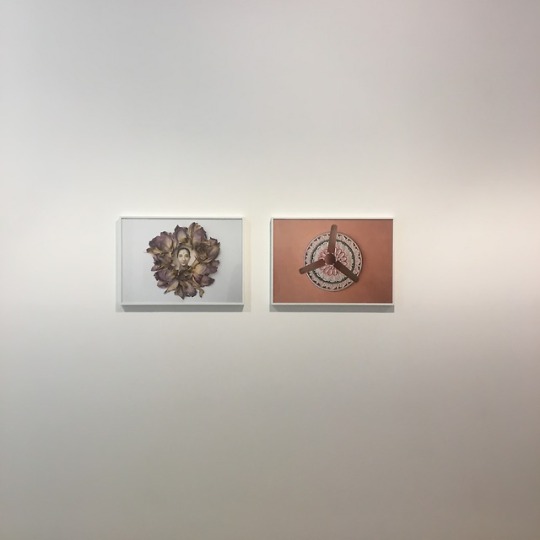

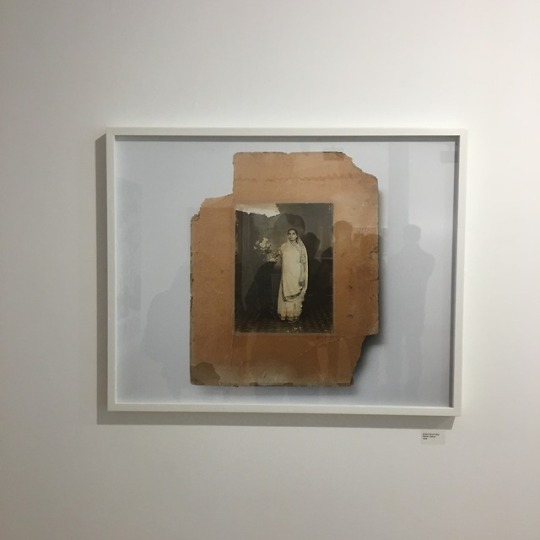
Arpita Shah Exhibition review
As a class we visited Arpita Shah’s exhibition ‘Nalini’. It was one of the best exhibitions I have ever been to, her work explored intimacy and maternal lineage in a ways I have never considered.
The images, all shot on medium format, were beautiful and gentle. This was carried by the use of portia film, which created soft and calming tones within the frames.
Shah also used and re-shot old photographs of her family. This is something I never thought was possible to include within your own work due to issues such as appropriation. Learning it is possible to re-use old images as long as you re-invent them is something which has been a massive inspiration to me, particularly for my graded unit.
How does the flyer /poster advertise the exhibition?
Flyer shows the location and the name of the exhibition
What is the suitability of the gallery space? How is the exhibition laid out?
Exhibition is laid out by using the whole gallery space. Images are framed and hanged in big and small sizes to compliment each other. She also has things in the middle of the space, making it an installation. Colour themes are also something that have been considered.
How has the work been mounted? Is this appropriate for the work?
Shah has varied her layout and presentation very well. Some of her work has been printed on paper and some are in has glass frames.
Who made the work?
Arpita Shah
Who did they make it for , who is the audience?
Her work is more about her family, her childhood and her culture. She is a visual artist her work would attract art lovers.
How does it make you feel?
I love her work. It’s proved to be a massive inspiration for me and has given me so many ideas for my own work.
If the work has title does it make you think about the images/s differently?
The work has title Nalini, which is her gran’s name and it tells me that she is talking about her family.
How would I describe it to someone later?
looks at maternal lineage, exploring the fields where culture and identity meet.
Does the photograph make you want to ask questions, what are these questions?
It must been quite difficult to choose final images from so many years work.
Is the work for sale and who might buy it?
She is exhibiting her work, so if someone wants to buy it she ll sell it.
What information is available about the artist?
Artist’s name, and her history surrounding her work
Who organised the exhibition and who selected the work?
Exhibition was organised by Street Level Glasgow
0 notes
Photo

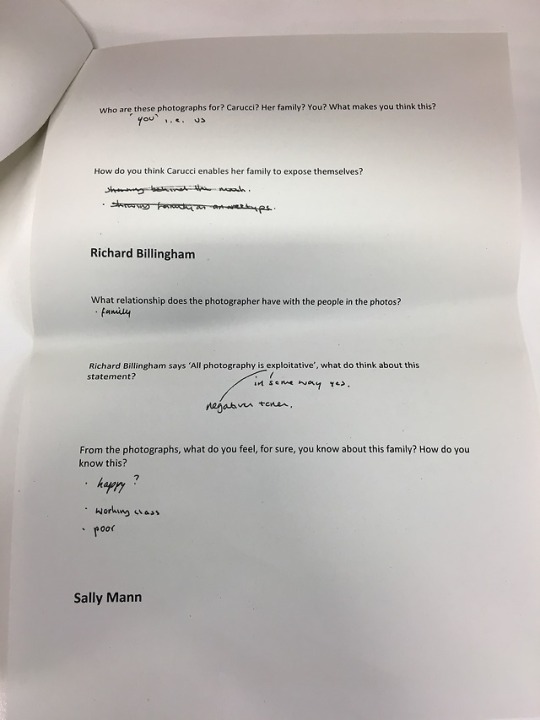

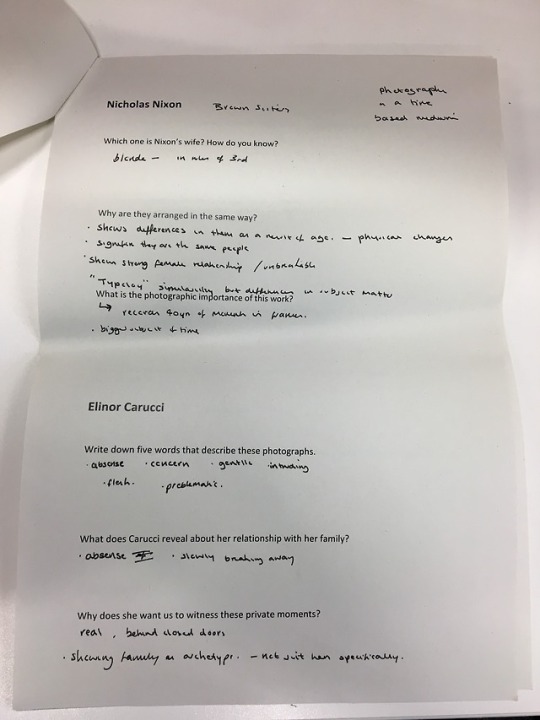
Contextual photography
Documentary// Family
0 notes
